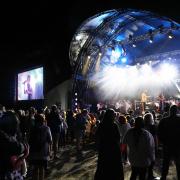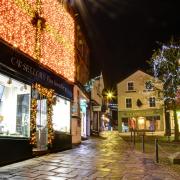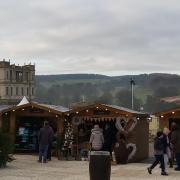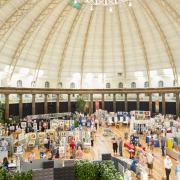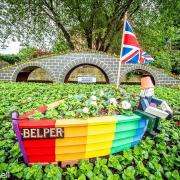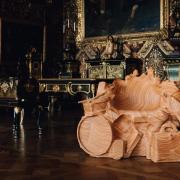Out and about with Roly Smith

Recorded in the Domesday Book as Eltune and probably named after a Saxon lady named Ella who lived here a thousand years ago, the White Peak village of Elton has a long and colourful history.
Standing at 900 feet above the sea, it has an unfortunate though probably well-earned reputation for coldness, and as its geology includes both millstone grit and limestone, it has examples of buildings and walls which use both.
But Elton’s history goes back much further than Ella, as the Nine Stones circle, tumuli and Castle Ring hillfort on nearby Harthill Moor testify. The lead mining industry of the 18th and 19th centuries also left its mark, notably in the nationally-important site known as Rainslow Scrins, a Scheduled Ancient Monument. A ‘scrin’ is a mineralised joint or fault fracture in the limestone.
Now, thanks to research by the village’s active Local History Group and a grant from the Peak District National Park’s Sustainable Development Fund, two interpretative panels have been installed at viewpoints on the edge of the village to help people understand and enjoy Elton’s historic landscape.
Lynn Burnet of the Elton Local History Group (ELHG) explained that the panels had been requested by the families of past villagers Roy Moseley and Albert Buxton, who have memorial seats at each location.
Lynn added: ‘The area we live in has a very rich history which we want to record and share with anyone who’s interested. These information boards help local people and visitors to interpret the landscape. We hope they will encourage people to come and spend some time enjoying all that Elton has to offer.’
The panel at the top of Moor Lane, near Roy Moseley’s seat, picks out more than 30 Peak District landmarks, including the Kinder plateau nearly 20 miles away, Mam Tor, Win Hill, Higger Tor, Haddon Hall and the spire of Bakewell church. Nearer at hand, it also interprets the lumps and bumps of the Rainslow Scrins lead mining site.
The second panel has been installed near Burycliffe quarry and Albert Buxton’s seat on Cliff Lane, north of the village. In addition to telling the story of how the spring here used to provide most of Elton’s drinking water and how pulping stones from the quarry were shipped to Scandinavia for the paper-making industry, it shows pictures of former village resident and motorcycle trials champion Mick Andrews, who practised his early motorcycling skills here.
The panels complement Elton’s Village Guide leaflet and the Explore Elton booklet which were also produced by the Group and supported by the Fund. Lynn said the lively group has now embarked on the Elton Field Barns Project, which is recording the locations of all field barns around the village, taking photographs, and trying to find out more about their history.
If you want to find out more about Elton and its history, go to the village website: www.eltonderbyshire.com
And if you would like to enjoy the panoramas without having to stand outside in the winter cold, printed proofs of both panels are on display on the ELHG notice board in the Village Hall.






